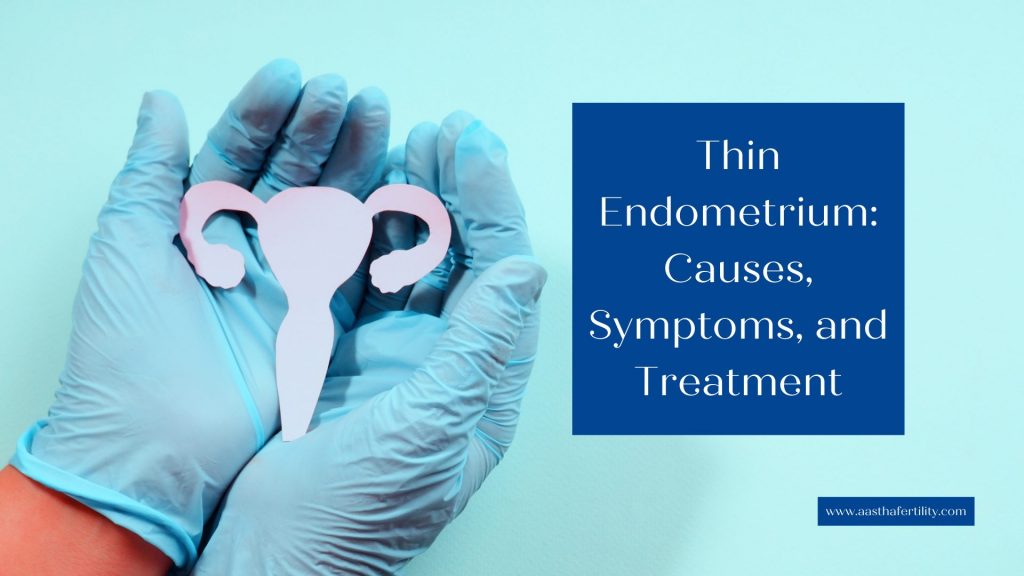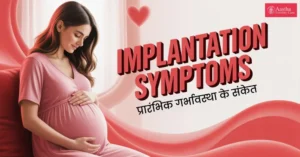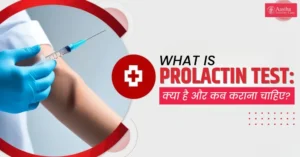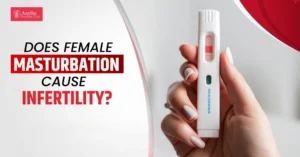The Uterus of the Female is her reproductive organ that carries the fetus during pregnancy. The uterus comprises the innermost, middle, and outer layers.
The endometrium, also known as the uterine lining, is the innermost lining that coats the uterus. It is the lining that fetches eggs and helps them grow through pregnancy.
The thickness of the endometrium keeps changing every month, women who are suffering from infertility due to thin lining or extreme thick lining need experts consultation—book an Appointment for thin Endometrium treatment at the best IVF center in Jaipur, Rajasthan.
Highlights
- A salutary and thick endometrium is crucial for a successful pregnancy and a regular menstrual cycle.
- Healthy Endometrium ensures effective fertilized egg implantation inside the uterus,
- Estrogen and progesterone hormones help in maintaining the desired endometrial thickness.
A thin endometrium happens when the lining inside your uterus doesn’t grow thick enough to support pregnancy. This common condition affects many women trying to conceive and can make it harder to get pregnant naturally or through fertility treatments like IVF.
Some women have a thin endometrial lining, a common factor contributing to infertility in females. Numerous studies have proven that if a woman has a thin uterus lining, then the chances for successful natural pregnancy and positive signs after the embryo transfer are reduced.
Here we discuss the normal thickness of the endometrial lining during the menstrual cycle, finding out the relatable causes, symptoms, and treatment for successful pregnancies.
What is Thin Endometrium?
The endometrium is the soft tissue that lines the inside of your uterus. Every month, this lining gets thicker to prepare for a possible pregnancy. If you don’t get pregnant, the lining sheds during your period.
For a healthy pregnancy, your endometrial lining should be thick enough for a fertilized egg to attach and grow. When doctors measure this lining with an ultrasound, they look for specific thicknesses at different times of your cycle
A thin endometrial lining cannot cultivate the eggs and hold them, increasing the chances of recurrent IVF failures. The reason for declining uterine lining thickness is either the menstrual cycle phase or hormonal imbalance.
Life Changing Experiences with Aastha Fertility - From Doubt to Success
Your endometrial lining changes thickness during different parts of your menstrual cycle:
- During your period: 2-4mm (very thin as the old lining sheds)
- Before ovulation: 5-7mm (starting to grow)
- Around ovulation: 7-11mm (getting ready for pregnancy)
- After ovulation: Up to 16mm (fully prepared for implantation)
“Lining below 8mm is associated with implantation failure, low pregnancy rates, and poor receptivity, considered as thin endometrium. And if the lining is less than 5mm, then there are zero chances of pregnancy.
Endometrial or uterine lining thickness is a beneficial predictor for pregnancy success and embryo implantation It is measured through ultrasound during IUI, IVF, cycle monitoring, and frozen embryo transfers” .-Knowing this the experts at IVF CLINIC first identify the real cause of Infertility and the recommend the treatment.
Thin Endometrium Causes
There are several reasons why your uterine lining might be too thin:
- Low Estrogen
A woman with a thin endometrial lining is usually diagnosed with low estrogen levels, the only hormone responsible for the thickening of the endometrium. Therefore, medication with oestradiol is prescribed to maintain desired estrogen levels, and the response is monitored.
If there are no changes in the lining even after medication, this indicates poor or inadequate blood supply. Lesser physical workouts and uterine wall tissue damage can be the reasons.
2. Inadequate Blood Flow
Sometimes, blood flow to the endometrial lining is restricted, leading to thin endometrium. There can be multiple reasons for restricted blood flow, varying from the tilted uterus to a sedentary lifestyle, fibroids, and polyps, causing the endometrial lining to shrink.
3. Fibroids and Myoma
Fibroids and Myoma are the thin layers of smooth muscles present in the uterus. But, 10-20% of women’s bodies tend to develop into thick muscles that further hinder epithelial lining growth.
The muscles initially develop on estrogen found in uterus linings. The muscles are too small to be detected by the naked human eye and too big to cause bulges in the uterus. Doctors usually recommend surgery to remove the fibroids, clearing the path for implantation.
4. Damaged Endometrial Lining
There are some cases when the estrogen levels are found normal in women’s bodies, but they still face complications in embryo implantation.
A damaged endometrial lining can be the reason for it which can cause the formation of scar tissue. This damage can be due to a previous bacterial infection, and surgery is recommended to remove the undesired scar tissue from the uterus.
5. Chronic Endometriosis
Chronic Endometriosis can also be the reason for the thin endometrial lining. Painkillers and hormone therapies are recommended to ease the symptoms.
The disease is not life-threatening but can hinder daily lifestyle and workings. Therefore, fertility experts recommend the course of antibiotics to get it treated as soon as possible.
6. Inadequate Health of Endometrial Tissue
Any bacterial infection, including endometrial TB, STDs, and pelvic inflammatory disorders, can lead to inflammation and leave scarring on the uterine lining, making it thin.
7. D & C or Any Surgeries
The functional base layer of the endometrium, known as the basalis, is frequently destroyed during dilatation and curettage; in this situation, the subsequent endometrial lining cannot develop, and the endometrium remains thin; this condition is known as Asherman Syndrome and is challenging to treat.
8. Birth Control Pills
Long-term birth control pill users may develop a thin and dysfunctional endometrial lining. Oral contraceptive tablets may affect the endometrial lining and estrogen level if taken excessively or abruptly, as they combine estrogen and progesterone.
9. Lifestyle Factors
Lifestyle factors such as inactivity, overexercise, starvation, smoking, etc., can affect the thinning of your endometrium. For example, when women starve begin to break down muscular tissue for fuel, including uterine muscles, which can shrink and result in a reduction in uterine contractions.
Also Read: Role of Endometrium in Female Reproductive Health
Symptoms for Thin Endometrium:
Studies have shown that 30% of women do not experience any symptoms directed to thin endometrium. They have got it diagnosed in the ultrasound conducted for their IVF Treatment.
The rest of the women who have faced thin uterine lining symptoms are:
- Irregular Periods:
One of the most common symptoms of thin endometrium in a woman is an irregular menstrual cycle. The timing for the menstrual cycle usually differs every month in the case of the thin endometrial lining.
However, it is recommended not to jump to any conclusions without clinical advice. Consult a doctor to know the reason and ideal treatment for the issue.
- Fertility Issues
Thick and healthy endometrium is essential to carrying out a successful pregnancy. Therefore, it is an important aspect needed for healthy egg implantation and fetus growth. Women with thin endometrium problems are also diagnosed with fertility problems.
- Painful Menstruation
Along with irregular periods, you might also experience painful periods due to thin endometrium. Consult your gynaecologist for the treatments if it continually grows with every cycle.
- Inadequate Bleeding during Periods
Another common symptom of thin endometrium is short periods associated with inadequate bleeding. The endometrial lining is too thin to shed off and contains lesser tissues released during the cycle.
What Are The Risks Associated With Thin Endometrium?
- Failure In Pregnancy
A thin endometrium lining prevents implantation from happening, which results in pregnancy failure.
- Miscarriage
Due to a lack of blood flow, a thin endometrium that does not react to hormones causes failure in implantation or miscarriage.
- Ectopic Pregnancy
In individuals with a thin endometrium, the chance of ectopic pregnancy is high. Ectopic pregnancy is said to occur at a rate of roughly 2% in the general population, but in individuals with thin endometriums, this probability may reach as high as 10%.
- Low Birth Weight And Preterm Delivery
Thin endometrium may result in suboptimal placentation, which causes lower birth weight and premature delivery.
Diagnosis of A Thin Endometrium
The most used method for gauging endometrial thickness is ultrasound. It is the approach that medical professionals employ initially, particularly if a patient has experienced unusual vaginal bleeding.
Doctors utilize MRI when ultrasonography is unsuitable, which is frequently due to a person’s uterus location or other medical issues.
If the doctor thinks there are chances of cell abnormalities or cancer, they suggest a biopsy.
Ultrasound: It is an excellent method to determine the thickness of the Endometrium lining. With a cut-off value for ET of 8 mm, TVS effectively identifies women who are highly unlikely to have EH+ and has a high sensitivity for identifying endometrial diseases, preventing the need for a more invasive endometrial biopsy.
Biopsy: When a sufficient specimen is recovered, an outpatient endometrial biopsy provides a high overall accuracy in detecting endometrial cancer. It is more reliable when a test result is positive than a result that is negative in confirming the presence of a disease. Therefore, additional assessment will be necessary for situations of unusual uterine bleeding if symptoms continue despite a negative biopsy.
It is necessary to use the correct diagnostic method to find the cause. If the accurate diagnosis is not performed on time, it could have adverse results.
Thin Endometrial Treatment Options?
Depending on the cause of thin endometrium, there are different treatments proposed by fertility experts. Doctors will run different tests and diagnoses to finding out the reasons and factors behind the issue, providing easy answers for how to increase the thickness of the endometrium!
Some of the best and most recommended uterus lining thin treatments with higher rates of success are:
- Estrogen therapy
Estrogen therapy is a hormonal therapy which helps endometrial lining grow thicker. This therapy is suitable for women how has low hormonal level and is facing difficulty in getting pregnant.
- Hysteroscopy
If the reason behind the thin endometrium lining is any intrauterine adhesions, then the fertility experts will perform a hysteroscopy. This procedure helps with the easy removal of scar tissue, restoring the healthier thick growth of the endometrial lining.
Book your online consultation with the team of experts at Aastha Fertility Center now to get the details for Hysteroscopy Cost.
- G-CSF injections
G-CSF injections are used to stimulate endometrium lining growth. These injections helps to increase endometrial lining thickness which increases chances of women getting pregnant.
- Acupuncture
Increased stress levels can also make the uterus line thin. Acupuncture therapy will eliminate the extra stress and negative energies from the body, reducing the stress levels for increased blood flow, thereby increasing the success rates of IVF treatment and IUI procedure.
- Platelet-Rich Plasma (PRP)
The most common treatment for thin endometrial and scarring following miscarriages is deemed to be platelet-rich plasma (PRP). PRP is your blood plasma that is 4-5 times more heavily enriched with platelets than normal blood. PRP contains several growth factors and cytokines that can promote proliferation and regeneration. Given that uterine and endometrial thickness are directly inversely correlated, PRP has been shown to improve endometrial growth and pregnancy rates.
Pros
- PRP therapy can encourage the development of new tissue, thickening the uterine lining, which is especially effective in recurrent abortions caused by endometrial weakness.
- PRP treatment uses your blood samples, so there is little or no chance of transmitting infectious diseases or immunological reactions.
Cons
- Pain at the injection site
- It is not a sure method.
When taking treatment for thin endometrium, you should continuously monitor the progress and follow-up care to ensure treatment success and prevent the recurrence of thin endometrium.
Natural Ways to Improve Your Lining
Many women can improve their endometrial thickness through lifestyle changes:
1. Eat the Right Foods
Certain foods can help build a healthier, thicker lining:
Foods That Help Build Your Lining:
- Iron-rich foods: Red meat, spinach, lentils, dark leafy greens
- Whole grains: Brown rice, quinoa, oats – studies show each daily serving may increase lining by 0.4mm
- Healthy fats: Avocados, nuts, olive oil, fatty fish like salmon
- Vitamin E foods: Almonds, sunflower seeds, spinach
- Citrus fruits: Oranges, lemons, pomegranates – help widen blood vessels
- Protein sources: Fish, chicken, eggs, beans
Indian Foods That Help:
- Turmeric – Reduces inflammation and improves blood flow
- Ghee (clarified butter) – Contains nutrients that support lining growth
- Sesame seeds – Rich in vitamin E
- Dates and figs – Good sources of iron and other minerals
2. Exercise Regularly (But Not Too Much)
- Light to moderate exercise improves blood flow to your uterus
- Good options: Walking 30 minutes daily, swimming, gentle yoga, stretching
- Benefits: Increases circulation, reduces stress hormones, balances reproductive hormones
- Best routine: 150 minutes of moderate exercise per week (about 30 minutes, 5 days a week)
- Avoid: Excessive cardio or high-intensity training that might reduce hormone levels
4. Manage Stress
- High stress can interfere with hormones needed for lining growth
- Try: Meditation, deep breathing, yoga, massage
- Consider: Counseling or support groups for fertility stress
5. Get Enough Sleep
6. Stay Warm
- Keep your body warm, especially your feet and lower abdomen
- Drink warm beverages instead of cold ones when trying to conceive
- Avoid ice-cold foods and drinks
7. Take Helpful Supplements
After talking with your doctor, consider:
- Vitamin E – May improve lining thickness
- L-arginine – Helps improve blood flow
- Low-dose aspirin – Can improve blood flow (only with doctor supervision)
- Omega-3 fatty acids – Reduce inflammation
- CoQ10 – May support cellular energy
Final Words
Low estrogen levels, poor blood flow, fibroids, poor endometrial tissue, pelvic surgeries, D&C, prolonged use of birth control pills, etc., can all lead to thin endometrium. Thin endometrium may show symptoms like irregular or atypical menstrual cycles, painful or unusual periods, insufficient menstrual bleeding, or infertility issues.
If you experience these related ovulation symptoms, consult the best infertility specialists at Aastha Fertility Center. The center is known for its highest IVF treatment success rates in India, ensuring a smooth pregnancy journey for all aspiring couples.
Book your appointment now to get a consultation from top certified embryologists for the best care!
FAQS
Can thin endometrium be fixed quickly?
While some improvements can be seen within days with treatment, building a healthy lining typically takes 1-3 menstrual cycles.
Is it possible to get pregnant with a thin lining?
Yes, though it's more challenging. With proper treatment and monitoring, many women with thin endometrium do conceive successfully.
What's the ideal thickness for pregnancy?
Most doctors aim for 7-14mm during the implantation window, with 8-12mm being optimal.
Do natural treatments really work?
Yes, many women see improvement with diet, exercise, and stress management, especially when combined with medical treatment.
How long does treatment take?
This varies by individual and cause. Some women see improvement in weeks, while others may need several months of treatment.







Leave a comment